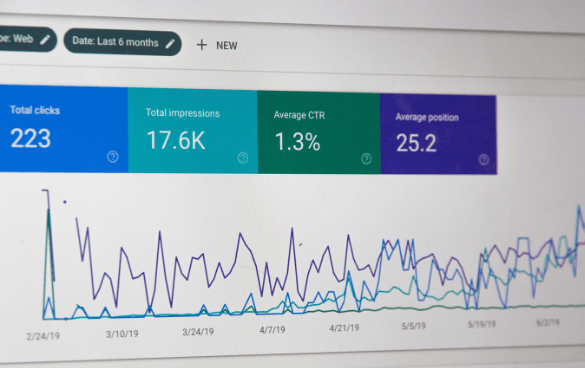Taking Advantage Of Remarketing in Google Analytics: A Comprehensive Guide
Harnessing remarketing in Google Analytics uses organizations a calculated side in reaching out to potential customers. This overview will drop light on the crucial actions involved in taking advantage of the complete possibility of remarketing in Google Analytics, leading to enhanced advertising and marketing outcomes.
Recognizing Remarketing in Google Analytics
Remarketing in Google Analytics allows businesses to strategically target users that have formerly engaged with their website or mobile app. By leveraging data from Google Analytics, businesses can create customized remarketing listings based on customer habits, such as pages gone to, actions taken, or certain goals achieved. This effective device makes it possible for businesses to re-engage with customers who have actually shown passion in their service or products, ultimately enhancing the chance of conversion.
Recognizing the different kinds of remarketing techniques is essential for an effective campaign - What Is “Remarketing” In Google Analytics?. Google Analytics uses different alternatives, consisting of typical remarketing, dynamic remarketing, and remarketing listings for search advertisements (RLSA) Each kind offers a distinct function and can be tailored to meet specific advertising and marketing goals
Furthermore, examining the efficiency of remarketing campaigns is necessary for optimizing outcomes. Google Analytics provides useful insights into the efficiency of different remarketing strategies, enabling services to make data-driven choices and improve their targeting method. By continuously adjusting and keeping track of remarketing initiatives based on analytics information, businesses can make best use of ROI and drive success in their marketing efforts.
Establishing Remarketing Campaigns

After setting up target market checklists, the following action is to link Google Analytics with Google Advertisements. By connecting these 2 platforms, organizations can flawlessly transfer audience lists from Google Analytics to Google Advertisements for remarketing objectives. This assimilation permits even more specific targeting and better campaign performance.
As soon as the accounts are linked, organizations can produce remarketing projects in Google Ads making use of the audience provides previously defined in Google Analytics. These campaigns can be tailored with specific ad creatives, messaging, and bidding process techniques to successfully re-engage with past visitors and drive conversions. By following these actions, businesses can take advantage of the power of remarketing to improve their advertising efforts and raise ROI.
Using Audience Division Methods

Predefined segments in Google Analytics permit you to quickly analyze usual audience categories fresh customers, returning users, or individuals who completed a particular goal on your internet site. Custom segments, on the other hand, allow you to produce one-of-a-kind sections based on particular criteria that are essential to your business purposes. Dynamic remarketing checklists immediately readjust based on customer behavior, showing tailored advertisements to customers who have communicated with your website in certain methods.
Studying Remarketing Performance Metrics
Upon reviewing the efficiency of remarketing campaigns in Google Analytics, the analysis of key efficiency metrics offers beneficial understandings right into target market engagement and conversion rates. By delving right into metrics such as click-through prices (CTR), conversion rates, expense per acquisition (CERTIFIED PUBLIC ACCOUNTANT), and return on advertisement invest (ROAS), online marketers can evaluate the success of their remarketing efforts. CTR indicates the percent of customers who clicked on the advertisement after viewing it, mirroring the advertisement's significance and charm. Conversion prices gauge the percent of customers that finished a desired activity, such as making a purchase, after clicking the advertisement. CPA reveals the ordinary expense sustained for every conversion, assisting assess project productivity. ROAS, on the other hand, evaluates the earnings generated for every dollar invested in marketing. Evaluating these metrics allows marketing experts to enhance campaigns, improve target market targeting, and allot budgets successfully to enhance total remarketing performance.
Maximizing Remarketing Approaches
When refining remarketing techniques in Google Analytics, concentrating on audience segmentation useful source is critical for achieving project success. By separating your target market into specific sections based upon their habits, demographics, or rate of interests, you can customize your ads much more properly per team. This targeted technique increases the possibility of involving users that have already shown passion in your service or products, causing greater conversion rates.
Another crucial facet of optimizing remarketing strategies is constantly testing and refining your campaigns (What Is “Remarketing” In Google Analytics?). A/B testing various ad creatives, messaging, or offers can aid you identify what reverberates finest with your audience and drives the most conversions. By examining the performance of these tests in Google Analytics, you can make data-driven choices to Source maximize your remarketing efforts further
In addition, leveraging vibrant remarketing can significantly boost your project results. This attribute permits you to reveal customized ads to individuals based upon their previous communications with your site, showcasing solutions or products they have actually previously watched. By supplying customized material to customers based on their interests and actions, vibrant remarketing can aid boost interaction and drive conversions.
Verdict
In final thought, utilizing remarketing in Google Analytics is a strategic approach to target customers that have actually previously engaged with a site. By creating personalized target market checklists and using target market segmentation techniques, businesses can maximize remarketing projects for raised conversion prices. Evaluating efficiency metrics and constantly optimizing techniques are important for taking full advantage of the efficiency of remarketing efforts.
Google Analytics supplies various choices, including typical remarketing, vibrant remarketing, and remarketing listings for search ads (RLSA)After setting up target market listings, the next step is to connect Google Analytics with Google Ads. By linking these 2 systems, businesses can effortlessly transfer target market lists from Google Analytics to Google Advertisements for remarketing functions.When the accounts are linked, services can create remarketing projects in Google Ads utilizing the audience notes formerly specified in Google Analytics.When refining remarketing techniques in Google Analytics, concentrating on audience segmentation is paramount for attaining project success.